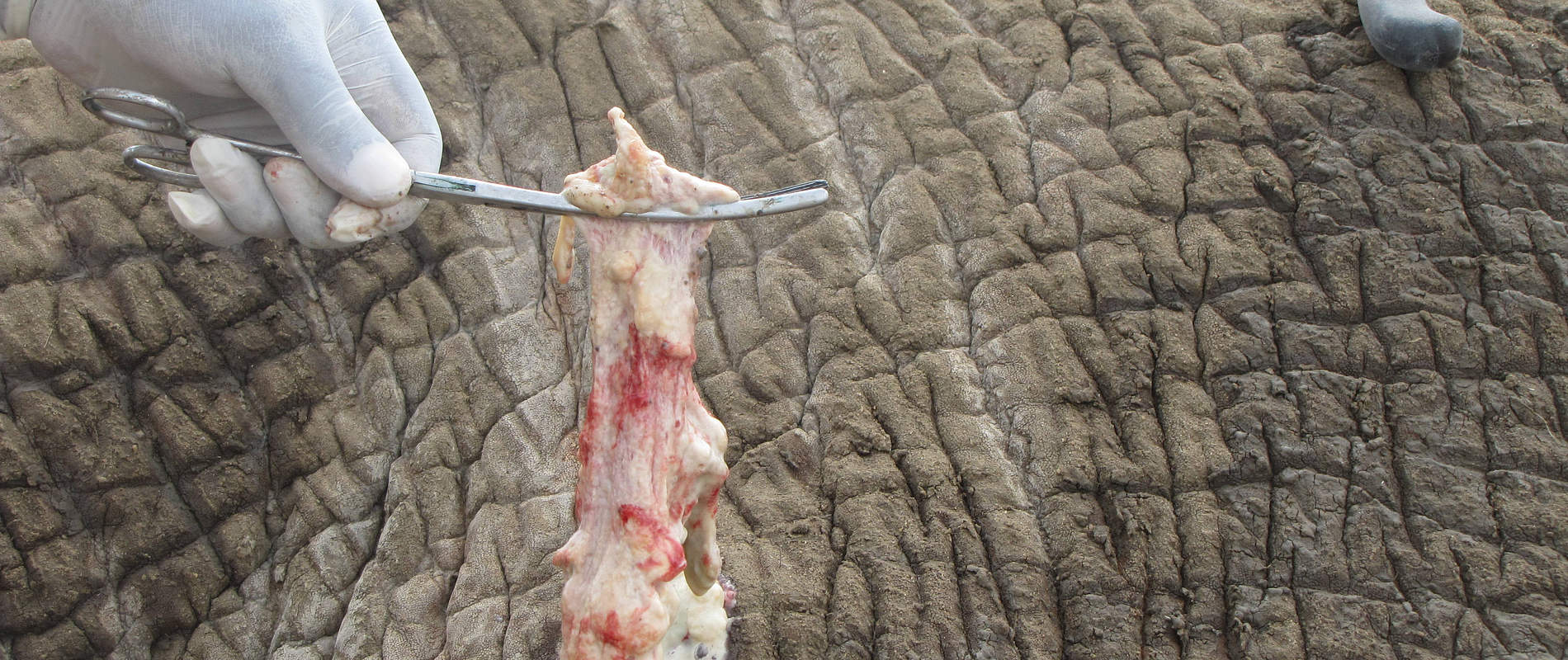FIELD VETERINARY REPORT FOR TSAVO MOBILE VET UNIT FOR THE MONTH OF JANUARY 2016 Reported By Jeremiah Poghon Introduction Tsavo ecosystem remains lush green due to the recent rains that were associated with the el nino weather pattern
FIELD VETERINARY REPORT FOR TSAVO MOBILE VET UNIT FOR THE MONTH OF JANUARY 2016
Reported By Jeremiah Poghon
Introduction
Tsavo ecosystem remains lush green due to the recent rains that were associated with the el nino weather pattern. Incidences of injuries in wildlife remained low during the month under review. The cases handled in the region included treatment of an injured elephant bull in Dakota plains of Tsavo east, autopsy of elephant carcasses in Rukinga ranch and Trypanasomosis and Tsetse survey in wildlife in Shimba hills national reserve.
CASE#1 TREATMENT AN ELEPHANT WITH AN ARROW INJURY
Date: 19th January 2016
Species: Elephant
Sex: Male
Age: Adult
Location: Dakota, Tsavo east
History
The elephant bull was seen by KWS rangers patrolling the area and alerted the vet team. The team rushed to the site and found the huge lone bull foraging in swampy grassland near the Voi River. There was a wound on his right inquinal area.
Immobilization, examination and treatment
This elephant was immobilized using 18 mgs Etorphine in a dan-inject dart from a vehicle. He moved away slowly with the team in trail, until he fell on the left flank exposing the wound.


There was an arrow injury filled with pus near the right inguinal area. The infected wound was opened, pus drained out and cleaned using water mixed with Hydrogen peroxide. Tincture of iodine and Oxytetracycline spray were applied before the wound was covered with wetted green clay.




Reversal
Drug reversal was achieved by administration of Diprenorphine Hcl at three times the Etorphine dose. He struggled briefly but later woke up on his own and walked away slowly.
Prognosis
Prognosis is very good
CASE#2 AUTOPSIES OF ELEPHANT CARCASSES
Date: 24th – 25th January 2015
Species: Elephant
Sex: Female and two Males
Age: Adult
Location: Wildlife works, Rukinga
History
The Wildlife Works Rukinga Rangers reported the discovery of three elephant carcasses in the Conservancy. The female elephant carcass was discovered in Taita Ranch while the two male carcasses were discovered in Rukinga ranch. The carcasses were at an advanced stage of decomposition and few details could be ascertained from the autopsy examination. On external examination an arrow head was recovered from the flank of one of the male carcasses, an indication of death through arrow shot. Tusks were recovered by KWS security teams for custody.


CASE#3 SHIMBA HILLS TRYPANASOMIASIS AND TSETSE SURVEY
Date: 25th January -2nd February 2016
Species: Variety
Sex: Both
Age: adults and sub adults
Location: Shimba hills National Park
History
Shimba Hills National Reserve located in Kwale County hosts a variety of wildlife among them the endangered Sable antelope. The population of Sable’s and other wildlife translocated to the reserve has not been doing well. One of the reasons given is the high numbers of Tsetse flies and Trypanasomiasis prevalence in the ecosystem. The coastal development program funded a Trypanasomiasis survey of the area that brought together researchers from KWS, KALRO and KENTEC.
Immobilization and sampling
A total of 20 animals made up of 11 buffaloes, 7 warthogs, an Impala and Hartebeest were sampled. Immobilization procedures used were as per KWS protocols for each species that included chemical and physical capture methods. Preliminary test results indicated one positive buffalo sample and further tests will be carried out in the laboratories.




Other activities undertaken
The Vet testified in Voi law courts after undertaking an autopsy in a case where several suspects are in custody for poaching offences in Tsavo conservation area.
Acknowledgement
The unit would like to appreciate the support of its sponsors ViER PFOTEN through the David Sheldrick Wildlife Trust (DSWT) for their continued funding. We also thank Kenya Wildlife Service through the Assistant director Tsavo conservation area and the head, veterinary and capture services department for their immense support to the unit.












